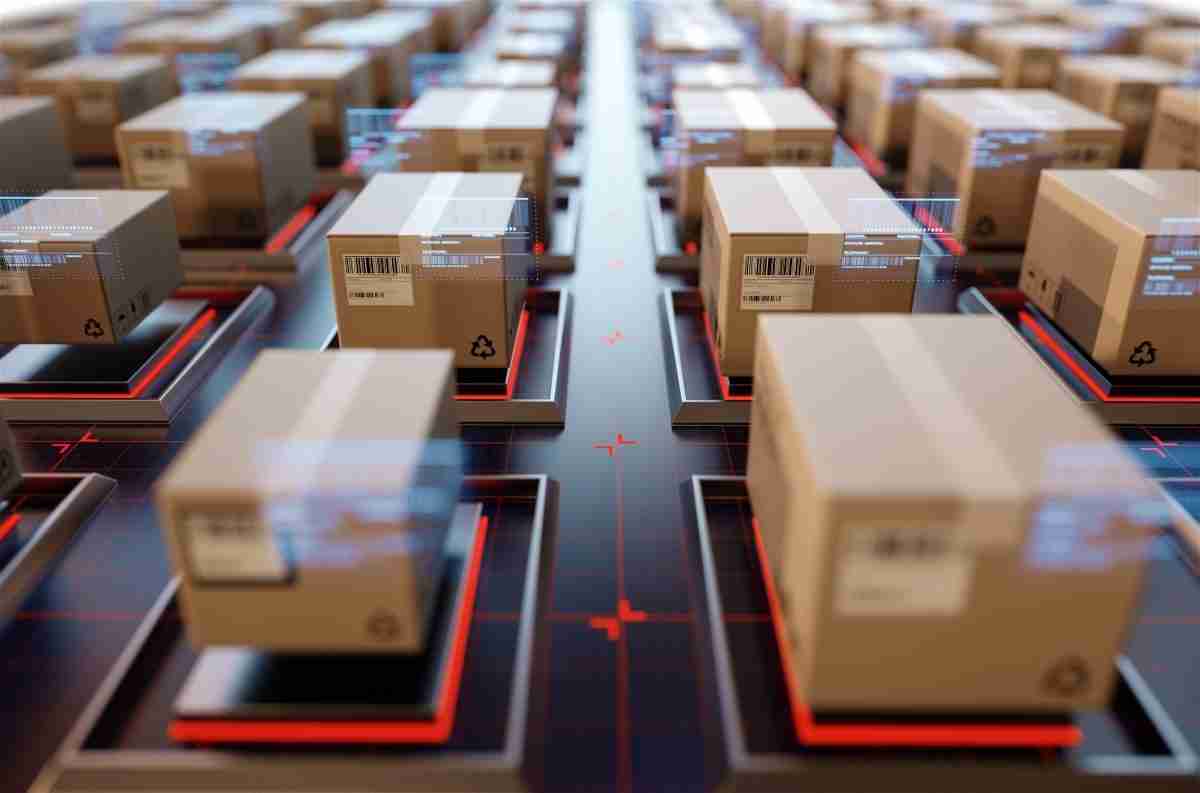Supply Chain & Logistics 101: The Automotive Supply Chain Challenges
For original equipment manufacturers (OEMs), suppliers, and investors, the future of the automotive supply chain will bring new opportunities – but...
4 min read
Ömer Ali Güneş
:
Jul 5, 2023 4:28:48 PM
In today's rapidly evolving world, the logistics and supply chain industry faces numerous challenges. From globalization to customer demands for faster deliveries, companies need to continuously optimize their operations.
Big data analytics has emerged as a game-changer, enabling businesses to gather, analyze, and leverage massive amounts of data to make informed decisions and drive innovation.
In this blog post, we will explore the pivotal role of big data in transforming logistics and supply chain management, backed by real-life data and examples.
1. Enhancing Visibility and Transparency
2. Demand Forecasting and Inventory Optimization
3. Route Optimization and Delivery Efficiency
4. Risk Management and Supply Chain Resilience
5. Warehouse Management and Order Fulfillment
6. Supply Chain Collaboration and Vendor Management
7. Continous Improvement and Predictive Analysis
RELATED:
5G TECHNOLOGY BENEFITS IN LOGISTICS
1. Enhancing Visibility and Transparency
One of the significant benefits of big data in logistics and supply chain management is improved visibility across the entire value chain.
By integrating data from various sources, including suppliers, warehouses, transportation providers, and customers, companies gain real-time insights into inventory levels, shipment status, and demand patterns.
For instance, Walmart utilizes big data analytics to monitor product sales and inventory levels, enabling them to proactively restock shelves and optimize their supply chain operations, leading to significant cost savings.
According to a study by Capgemini, companies that invest in real-time supply chain visibility experience a 50% reduction in out-of-stock inventory and a 10% improvement in perfect order delivery.

2. Demand Forecasting and Inventory Optimization
Accurate demand forecasting is critical for optimizing inventory levels, reducing costs, and meeting customer expectations.
Big data analytics enables companies to analyze historical sales data, customer behavior, market trends, and external factors to generate precise demand forecasts.
By integrating data from multiple sources, such as point-of-sale systems, social media, and weather reports, companies can identify patterns and anomalies, leading to more accurate predictions.
According to a report by McKinsey, companies that use big data analytics for demand forecasting experience up to a 20% reduction in inventory holding costs and a 10% improvement in forecast accuracy.
RELATED:
4 KEY FACTORS OF CHOOSING AN AUTOMATION SYSTEM FOR WAREHOUSES
3. Route Optimization and Delivery Efficiency
Logistics companies deal with complex transportation networks and face challenges in finding the most efficient routes for deliveries.
Big data analytics helps optimize routes by considering factors such as traffic conditions, weather patterns, and historical delivery data.
By using advanced algorithms and real-time data feeds, companies can identify the most efficient paths, reducing fuel consumption, minimizing delivery delays, and enhancing overall customer satisfaction.
UPS, a global logistics provider, utilizes big data analytics to optimize its delivery routes. By avoiding left turns, reducing idling time, and optimizing routes, UPS saves around 10 million gallons of fuel annually, resulting in significant cost savings and reduced carbon emissions.
4. Risk Management and Supply Chain Resilience
In today's interconnected global economy, supply chain disruptions can have severe consequences.
Big data analytics helps companies identify and mitigate risks proactively. By analyzing real-time data from suppliers, weather forecasts, geopolitical factors, and social media sentiment, companies can anticipate potential disruptions and take preventive actions.
This enhances supply chain resilience, reduces downtime, and ensures continuity of operations.
During Hurricane Harvey in 2017, The Home Depot utilized big data analytics to monitor and respond to the storm's impact.
By leveraging data on product demand, store operations, and logistics, the company was able to reroute trucks, prioritize essential supplies, and restore operations swiftly.

5. Warehouse Management and Order Fulfillment
Efficient warehouse management and order fulfillment are vital for meeting customer expectations.
Big data analytics can optimize warehouse layouts, inventory placement, and labor allocation, leading to reduced handling costs, improved picking accuracy, and faster order processing.
By analyzing real-time data from sensors, RFID tags, and IoT devices, companies can automate inventory tracking, identify bottlenecks, and streamline warehouse operations.
Amazon, the global e-commerce giant, leverages big data analytics to optimize its warehouse operations.
By using algorithms to predict product demand, Amazon strategically places inventory closer to the customers, resulting in faster order fulfillment and reduced shipping costs.
Additionally, the company utilizes data from sensors and automation technology to streamline picking, packing, and shipping processes, ensuring efficient warehouse management and customer satisfaction.
6. Supply Chain Collaboration and Vendor Management
Big data analytics facilitates collaboration among various stakeholders in the supply chain, including suppliers, manufacturers, distributors, and retailers.
By sharing relevant data and insights, companies can improve coordination, synchronize production schedules, and optimize inventory levels.
With real-time data, companies can identify potential bottlenecks and take proactive measures to address them, enhancing overall supply chain performance.
The collaboration between Procter & Gamble (P&G) and its retail partners is an excellent example of leveraging big data for vendor-managed inventory.
By sharing real-time sales data and inventory levels, P&G and its partners can proactively manage stock replenishment, resulting in reduced out-of-stock situations and improved sales performance.
RELATED:
HOW DIGITIZATION IMPROVES SUPPLY CHAIN EFFICIENCY, AGILITY AND CUSTOMER FOCUS
7. Continuous Improvement and Predictive Analytics
Big data analytics enables companies to gain valuable insights from historical data and identify improvement opportunities. By analyzing vast amounts of data, companies can identify patterns, trends, and correlations that were previously difficult to uncover.
Predictive analytics techniques help companies anticipate future scenarios, such as demand fluctuations, supply shortages, or transportation disruptions.
This proactive approach empowers companies to make data-driven decisions, implement predictive maintenance strategies, and optimize their operations for enhanced efficiency and customer satisfaction.
DHL, a global logistics provider, uses big data analytics to optimize its freight operations.By analyzing historical shipping data and external factors such as weather patterns and port congestion, DHL can identify potential delays and take necessary actions to mitigate risks. This allows DHL to provide reliable and timely freight services to its customers.
Conclusion
Big data has become an invaluable asset in the logistics and supply chain industry. By harnessing the power of data analytics, companies can gain deep insights into their operations, optimize processes, and enhance overall performance.
From improving visibility and demand forecasting to optimizing routes, mitigating risks, and enhancing warehouse management, big data plays a pivotal role in revolutionizing logistics and supply chain management.
Embracing this data-driven approach enables businesses to stay competitive, meet customer expectations, and drive innovation in the dynamic world of supply chain operations.
RELATED:
5 TRENDS THAT WILL STAND OUT IN WAREHOUSE MANAGEMENT THROUGHOUT 2023

For original equipment manufacturers (OEMs), suppliers, and investors, the future of the automotive supply chain will bring new opportunities – but...

The corporate world is evolving towards an e-economy or digital economy. It is currently undergoing a digital revolution that is moving at a dizzying...

The importance of product packaging in the supply chain is greater than many people realize. As a business owner, you want your items to be packaged...